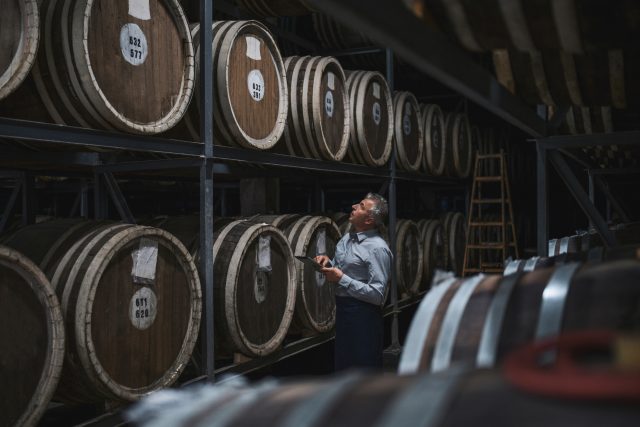This website uses cookies so that we can provide you with the best user experience possible. Cookie information is stored in your browser and performs functions such as recognising you when you return to our website and helping our team to understand which sections of the website you find most interesting and useful.
First UK standards on whisky production published
The British Standards Institution (BSI), the UK’s national standards body, has published the first guidelines on Welsh, English, Irish and Scotch whisky production, including details on elements from colour to packaging.

The voluntary standards (BS 8636) provide a specification on the production process for UK-made whisky being sold here or traded globally.
Details set out in the new guidelines include an outline on the desired colour of the whisky, which the should be caramel, ranging from a pale yellow/gold to deep amber/mahogany.
Whisky must be matured for at least three years in wooden casks, according to the guidelines, and cannot be sweetened or contain any additives.
They also sets the minimum ABV as 40%, and advises that every distillation should be carried out at less than 94.8% volume to ensure that “the distillate has an aroma and taste derived from the raw materials used”.
The BSI has said the new guidance is aimed at both established brands and new market entrants, helping them demonstrate “quality and authenticity in their production processes and supply chain”.
The national standards body is also encouraging producers from other regions globally to use the standards.
Scott Steedman, director general, Standards, BSI said: “We hope the standard will create a benchmark for quality that will add value to the distillers who use it and increase the confidence of consumers everywhere. This new standard has world-wide application and can help to facilitate the production and trade of high-quality whisky worldwide.”
The shape of the glass used for “whisky nosing” is not prescribed, although the advice reads that “the most popular glasses for this are tulip shaped, as they allow aromas to collect”.
Use of animal products in the production of other alcoholic beverages stored in the cask prior to the whisky should be considered when it comes to product labelling, the standards state.
The new standards will be managed by a technical committee in BSI, which may revise and update the standard as required based on market feedback.
The standards are being welcomed in by the Scotch Whisky Association (SWA), which contributed to the development of the Standard. Martin Bell, deputy director for trade at the SWA, said this morning: “The creation of this new voluntary Standard for whisky is a positive development for the industry, as we seek to continue to grow exports around the world. Scotch Whisky is the world’s most popular whisky, already exported to 180 global markets and worth £6.2bn in 2022 – 95% of all whiskies produced across the UK. This Standard helps to underline the high quality of Scotch and other UK whiskies, and will support the elimination of red tape overseas by becoming a recognisable emblem of quality that regulators worldwide can emulate.”

